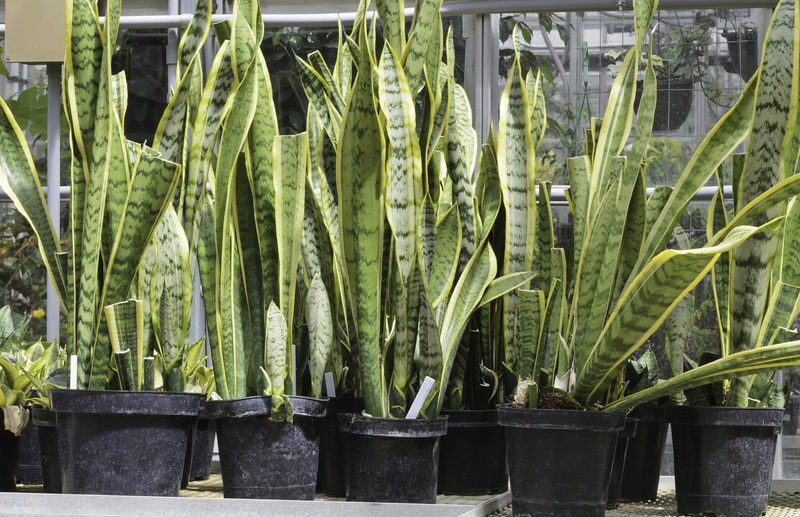Unveiling Growth Potential in Leftovers
Posted on 02/09/2025
Unveiling Growth Potential in Leftovers: Turning Waste into Wealth
In today's world, where sustainability and resource efficiency have become top priorities, unveiling growth potential in leftovers is not just a trend--it's a necessity. Whether you're a food enthusiast, restaurateur, entrepreneur, or eco-warrior, understanding how to transform what is often considered "waste" into valuable resources can open new avenues for economic and environmental growth. This comprehensive article will guide you through the innovative ways in which leftovers can be a treasure trove of opportunity.

Understanding Leftovers and Their Growing Importance
The term leftovers typically brings to mind extra food after a meal, but in a broader business and ecological context, leftovers encompass any remnants from production processes--be it food, textiles, manufacturing by-products, or even digital data. With global populations booming and resources becoming scarcer, the imperative to maximize every available asset is stronger than ever before.
Growth potential in leftovers is unlocked when we start viewing these remnants not as waste, but as opportunities--a radical shift in mindset that is key to sustainable progress.
Why Should We Care About Leftovers?
- Environmental Impact: Reducing leftovers minimizes landfill use and lowers greenhouse gas emissions.
- Economic Gains: Reuse and upcycling often translate into tangible cost savings and new revenue streams.
- Resource Efficiency: Squeezing value out of every input maximizes productivity.
- Innovation: Leftover management inspires new business models and creative solutions.
Exploring Types of Leftovers With Growth Potential
To truly understand the potential growth hidden in leftovers, let's explore the main categories where innovation is happening:
1. Food & Beverage Leftovers
- Kitchen Scraps and Meal Remnants: Transforming extra cooked foods into new dishes, or repurposing vegetable trimmings into broth for culinary creativity and cost savings.
- Brewery and Winery By-products: Spent grains from breweries are being turned into high-protein flour or animal feed, while grape skins from wineries give life to cosmetics and health supplements.
- Community Sharing Platforms: Apps and platforms are helping to redistribute surplus meals, reducing food waste while fighting hunger.
Interesting Fact: According to the Food and Agriculture Organization (FAO), approximately 1.3 billion tons of food are wasted annually worldwide--unveiling edible growth potential worth billions of dollars.
2. Industrial and Manufacturing Leftovers
- Construction Waste: Concrete, metals, and wood scraps are increasingly reprocessed and reused in new building projects, contributing to the circular economy.
- Textile Offcuts: Fashion brands are reimagining offcuts as upcycled clothing, accessories, or insulation materials for eco-friendly homes.
- Tech Hardware Disposal: E-waste recycling not only reduces pollution, but extracts precious metals like gold, silver, and rare earth elements for renewed production.
3. Agricultural Leftovers
- Crop Residues: Traditionally burned, crop leftovers are being turned into biofuels, animal bedding, and sustainable packaging materials.
- Fruit Peels and Seeds: These nutritious remnants are sources of value-added products, from essential oils to natural dyes.
4. Digital and Data Leftovers
- Unused Data: Information collected but never analyzed can reveal hidden patterns for business optimization.
- Content Repurposing: Outdated blog posts or media clips can be refreshed to reach wider audiences and enhance SEO.
The Economic, Environmental, and Social Benefits of Leftover Utilization
Unlocking growth potential in leftover items delivers a triple bottom line: profits, planet, and people. Let's break down how value is generated across these domains.
Economic Advantages
- Cost Reduction: Utilizing what would otherwise be discarded cuts raw material expenses.
- New Revenue Streams: Companies profit by selling upcycled products or charging for waste-collection services.
- Brand Differentiation: Eco-conscious consumers reward businesses paving the way with creative leftover solutions.
The global food waste management market alone is expected to reach over $64 billion by 2028, fueled by solutions that transform leftovers into resources.
Environmental Impact
- Reduced Pollution: Landfills and incinerators are less burdened, curbing emissions and land degradation.
- Resource Conservation: Circular practices ensure natural resources are efficiently utilized.
- Biodiversity Preservation: Less waste leads to reduced habitat destruction and healthier ecosystems.
Social Benefits
- Community Engagement: Food rescue programs directly address hunger and inequality.
- Job Creation: Recycling, upcycling, and logistics sectors grow, providing new employment opportunities.
- Education and Innovation: Engaging communities in creative reuse fosters a culture of sustainability.
How Businesses Can Tap Into Hidden Potential
Revealing the growth prospects lurking in leftovers requires strategic planning and a willingness to innovate. Here's a step-by-step framework for organizations and entrepreneurs:
1. Audit and Assess Your Leftovers
- Identify the types and volumes of leftovers generated.
- Analyze current disposal practices.
2. Research Best Practices and Technologies
- Explore case studies of similar industries successfully utilizing leftovers.
- Consider technology investments like composters, upcycling machinery, or digital data analyzers.
3. Build Strategic Partnerships
- Collaborate with logistics, waste management, or community organizations.
- Form joint ventures with innovators in circular economy sectors.
4. Innovate New Products or Services
- Develop upcycled or value-added products from leftover materials.
- Offer subscription or donation services for surplus items.
5. Educate and Engage Stakeholders
- Train staff and inform customers about the positive impacts of leftover utilization.
- Monitor metrics and communicate progress for continuous improvement.
Creative Examples: Unveiling Growth Potential in Real-World Leftovers
Food Industry Innovations
- Rubies in the Rubble (UK): This startup crafts gourmet condiments and preserves from surplus and imperfect produce, saving tons of food from landfill and delivering unique flavors to consumers.
- Olio App: Connecting individuals and businesses with extra food to local neighbors or charities, Olio reduces waste by millions of meals annually.
Manufacturing Marvels
- ByFusion: Turns unrecyclable plastic waste into reusable, durable construction blocks, thus addressing two environmental challenges with one innovative solution.
- Patagonia: This outdoor brand's Worn Wear program repairs and resells used clothing, extending the life cycle of textiles and shifting consumer behavior.
Tech and Data Repurposing
- IBM Watson: Uses "leftover" unstructured data to draw insights for clients, optimizing everything from healthcare outcomes to supply chain management.
- Digital Content Rejuvenation: Many bloggers and marketers revamp old, underperforming articles to boost SEO, drive new traffic, and increase engagement.
How Individuals Can Unveil Growth in Leftovers
Embracing the growth potential in leftover resources isn't just for big businesses. At home and in the community, you can join the revolution too!
Smart Kitchen Strategies
- Meal Planning: Organize meals to prioritize perishables and maximize food usage.
- Creative Cooking: Embrace recipes that utilize stems, peels, and scraps for broths, smoothies, and garnishes.
- Composting: Transform non-edible leftovers into nutrient-rich soil for home gardens or community parks.
Donation and Sharing
- Use local food-sharing apps or community fridges to prevent edible items from going to waste.
- Host swap events for clothing, books, or other household goods and reduce landfill contributions.
Upcycling Crafts
- Turn glass jars into planters, fabric scraps into quilts, or old electronics into DIY projects.
- Engage children in crafts to foster creativity and environmental stewardship.
Challenges & Solutions in Unlocking Leftover Growth Potential
Despite its promise, extracting value from leftovers can face hurdles, including logistical, technological, and perception challenges. Here's how to address them:
1. Collection and Logistics
- Solution: Leverage digital platforms and local partnerships for efficient collection and redistribution of surplus materials.
2. Safety and Quality Control
- Solution: Implement strict standards and certifications to ensure leftover repurposing meets health and safety guidelines.
3. Consumer Acceptance
- Solution: Educate customers about the benefits and quality of upcycled or repurposed products through transparent marketing.
4. Economic Viability
- Solution: Seek government grants, tax incentives, and private investments for green innovation and circular economy initiatives.

The Future of Growth in Leftovers: Toward a Circular Economy
The path forward is clear: by unlocking the growth potential in leftovers, we will transition from a wasteful linear economy to a regenerative circular system. Here's what to expect in the coming years:
- Advanced Technology: AI and IoT will streamline waste tracking and resource allocation, making leftovers a prime source of value creation.
- Policy Evolution: Legislation will increasingly support the reuse and repurposing of surplus materials through bans and incentives.
- Consumer Trends: The next generation will demand transparency, efficiency, and eco-responsibility in every product they buy.
Businesses and individuals who embrace this shift now will reap the rewards of profitability, sustainability, and reputation in an increasingly competitive world.
Conclusion: Leftovers--Your Untapped Resource for Sustainable Growth
From kitchen scraps to industrial offcuts, unveiling the growth potential in leftovers is not only an inspiring paradigm shift; it is vital for the well-being of society and the planet. By transforming waste into opportunity, we create a sustainable system where innovation flourishes, resources are conserved, and prosperity is shared. Begin your journey today--every remnant has a story, and every leftover holds the promise of new growth and possibilities.

